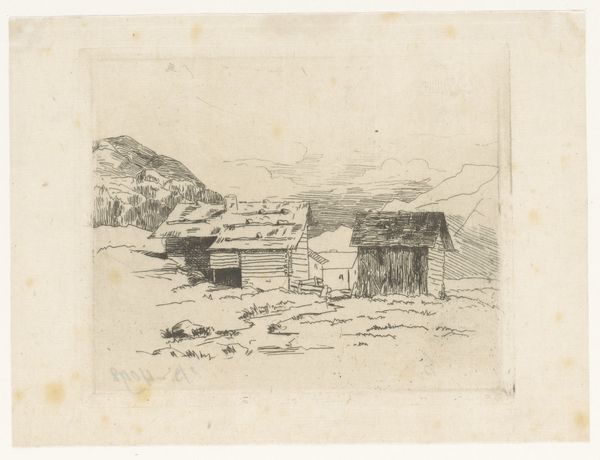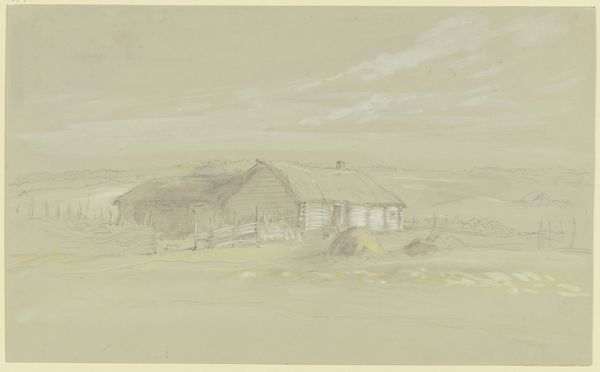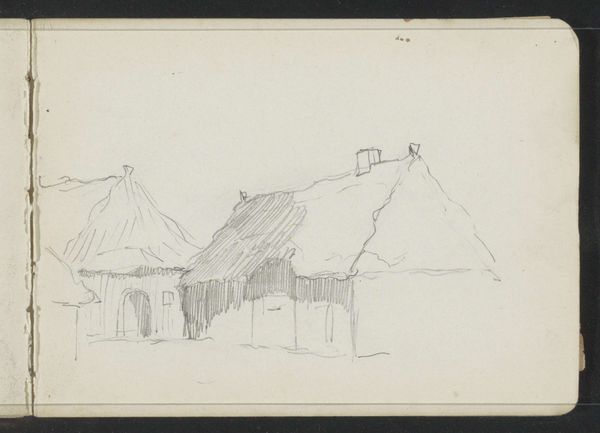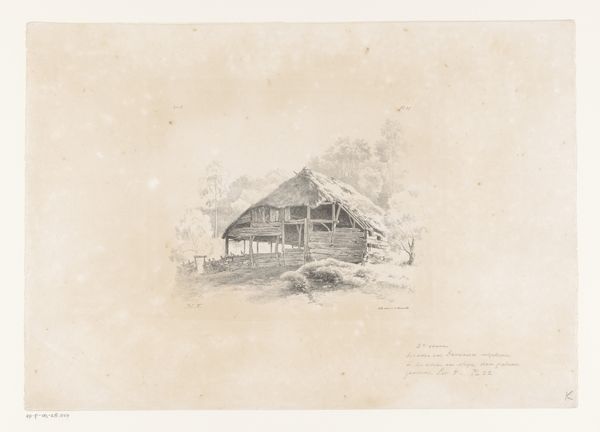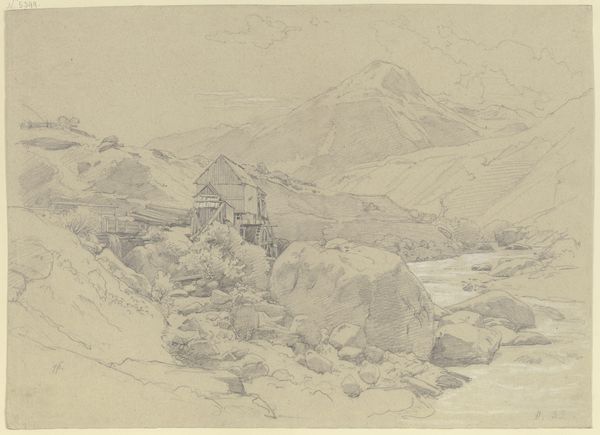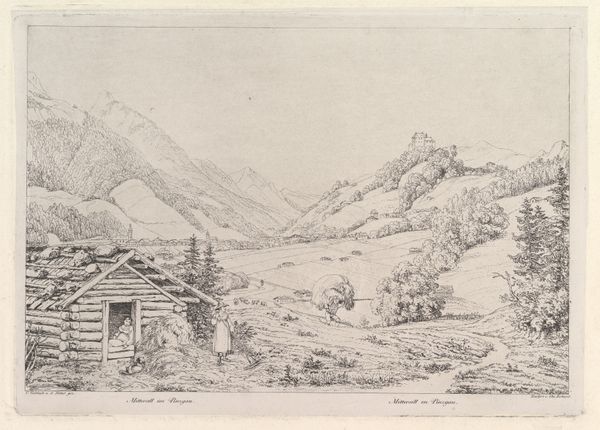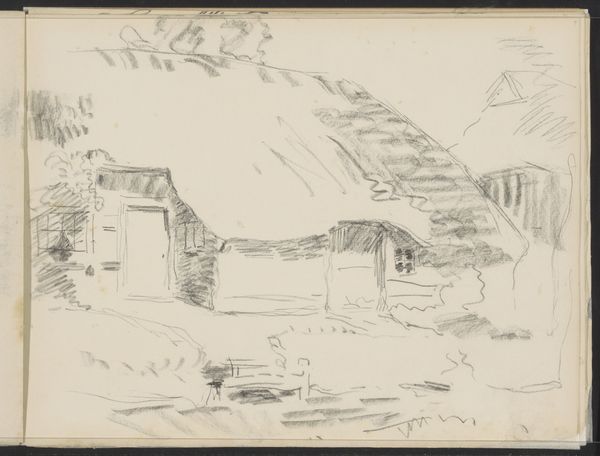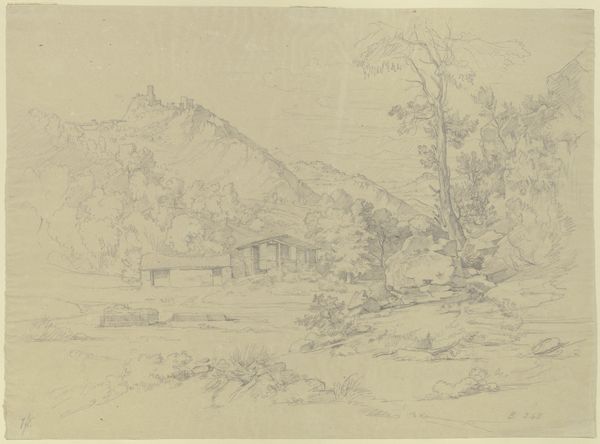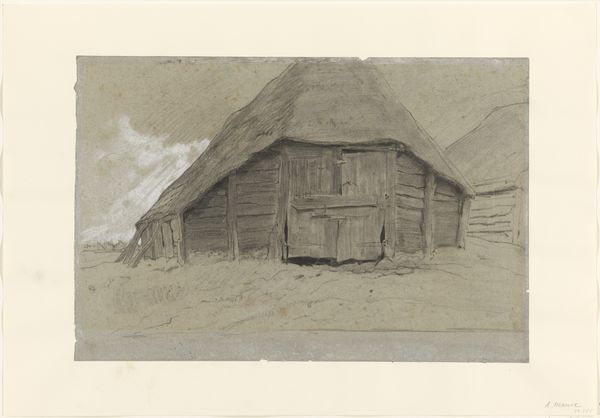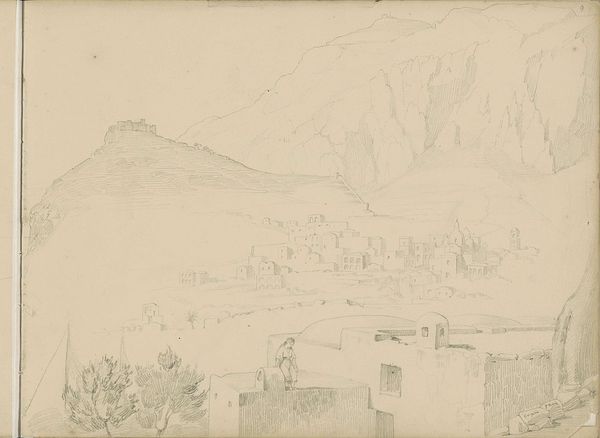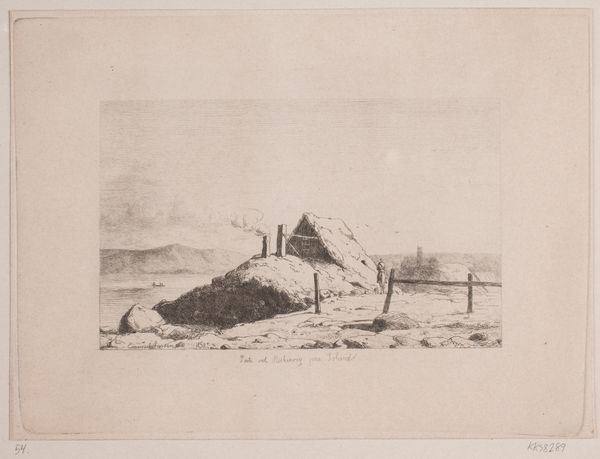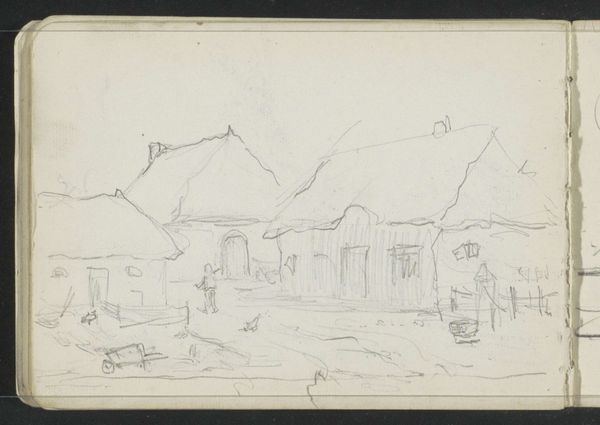
Sieben Hundestudien, in der Mitte Töchterchen mit Hund an Sessel gelehnt
0:00
0:00
drawing, pencil
#
drawing
#
landscape
#
figuration
#
pencil
#
realism
Copyright: Public Domain
Curator: Wilhelm Amandus Beer's drawing, titled "Sieben Hundestudien, in der Mitte Töchterchen mit Hund an Sessel gelehnt," presents a village scene rendered in pencil. Its precise date remains unknown, adding to its enigmatic quality. Editor: It’s understated. The gray pencil on tinted paper creates this hushed, almost dreamlike atmosphere. The landscape feels bleak, the village homes look humble and functional. It evokes a sense of remoteness and the everyday realities of the people inhabiting this space. Curator: The pencil medium offers a level of accessibility here, it is easily acquired and the drawing provides immediate opportunities for observation. I’m struck by Beer's approach to the landscape. The level of detail he employs speaks to the economic value placed on land in the late 19th century. We can see elements like fences and domesticated animals acting as visual shorthand that reflects systems of ownership. Editor: You're right, those figures are fascinating! But what I also see is perhaps the reality for people at that time. Even the portrayal of dogs is incredibly poignant, seemingly representing the working life in the rural area rather than simply companionship. Considering its unknown date, this adds an element of considering our cultural understanding and treatment of non-human animals. Curator: Certainly. And when you consider that those living in the houses would have needed access to water sources, trade routes, and that social capital would likely have been consolidated through close-knit kinship relations, it makes the lack of formal finish on the paper itself almost irrelevant to our contemporary reading of this landscape. I’m interested in the lack of evidence of heavy artistic labor. Editor: So, moving from production to potential reception, imagine the experience of a villager seeing this drawing back in its time. Would it be an act of honoring the community, or one of simply recording another person’s existence for academic or personal means? Did the artistic interpretation give them dignity or something else? The contrast of their labor against Beer’s also says something about power dynamics at the time. Curator: It is these socio-economic conditions and power imbalances of labor that artists contend with when creating realist work! Considering these issues invites a critical reevaluation of the role landscape art can play when documenting history and life through a sensitive, material lens. Editor: This discussion really highlights that these understated visualisations still echo throughout globalized society as questions around representation. We might see “mundane” as one initial response, but the reality may still feel painfully familiar for others across race, class and social geographies.
Comments
No comments
Be the first to comment and join the conversation on the ultimate creative platform.
